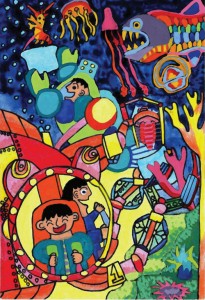Short list of things I like*:
- Museums
- Rocks
- Google-ing shit

That list set me to brainstorming a blog post that would forward a perfect pairing of objectives. Said post must be marginally interesting while seeding the reader with an unstoppable urge to visit a local museum. But what if there isn’t one in their town? What is the smallest town in the United States? (Sorry international paleopals, I had to limit the search somehow.) How far would you have to ride your speedy Schwinn two wheeler to get to a museum from there? Out of five candidates for smallest city in the US, let us select Gross, Nebraska for closer examination. The total population of 5 lives in a single household, making the theoretical travel arrangements slightly more managable. As it turns out, the Ponca Tribal Museum and Library of Niobrara, NE is open Monday through Friday, 8-4. Google tells me it is only 38.1 miles away from Gross, NE, a three and half hour bike ride away.
If you instead live in or around the 6th largest US city, Houston, TX, why don’t you come out to Dino Days at the Houston Museum of Natural History this Saturday, November 6 from 11-3. “Discover how bone models are made, dig deep in our Fossil Dig Pit, and meet some living dino relatives and answer some tough Triassic Trivia! Bring your little paleontologist and together you can discover the world of the dinosaurs.” There will also be a micropaleontology booth where learned foraminifera lovers can tell you all about our tiny calcareous friends.









